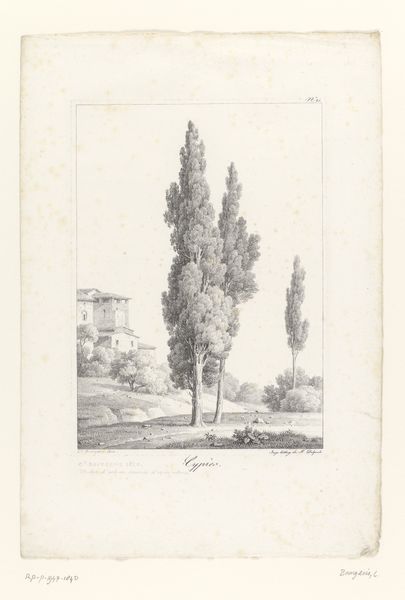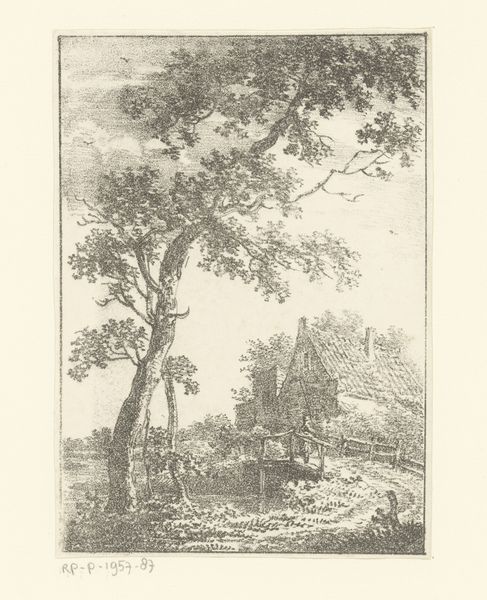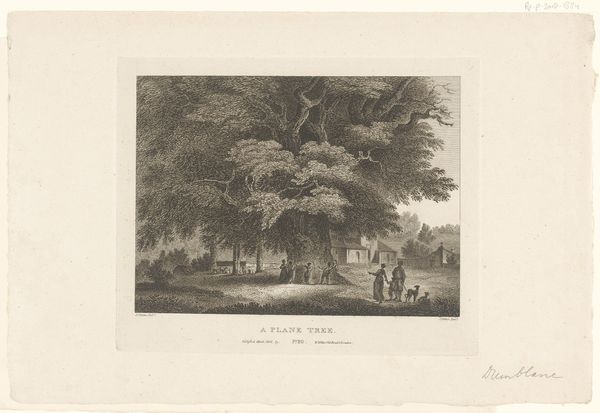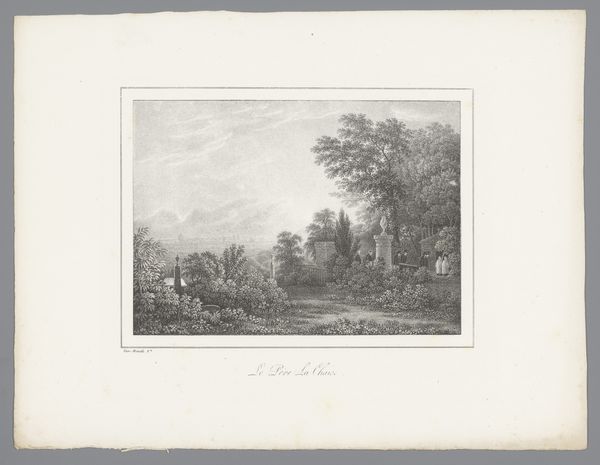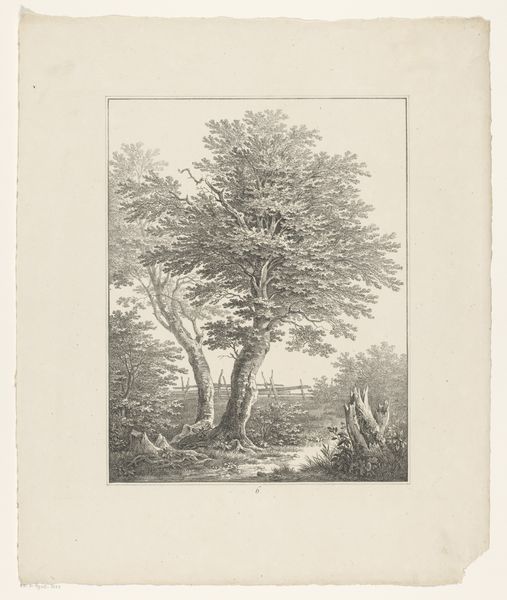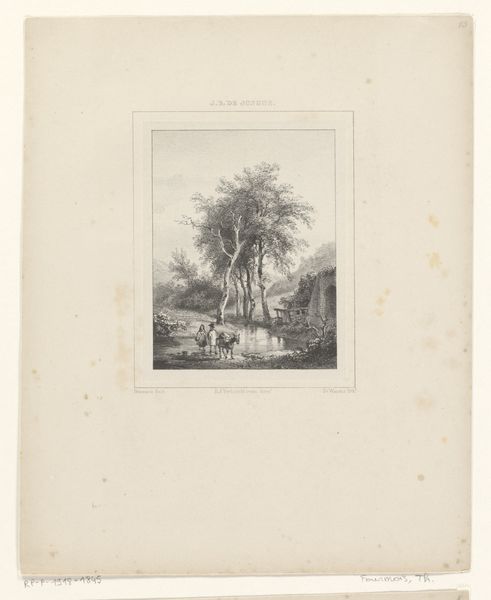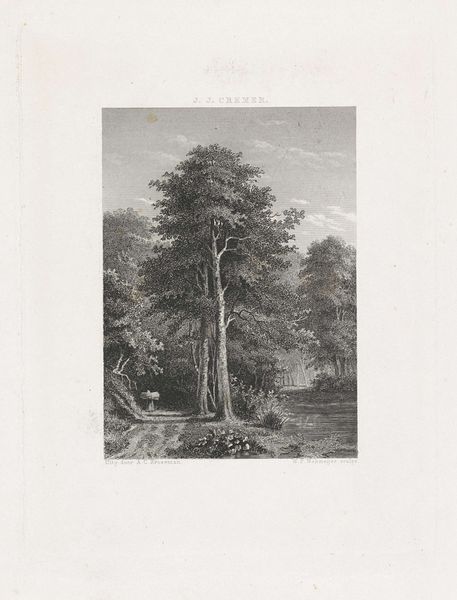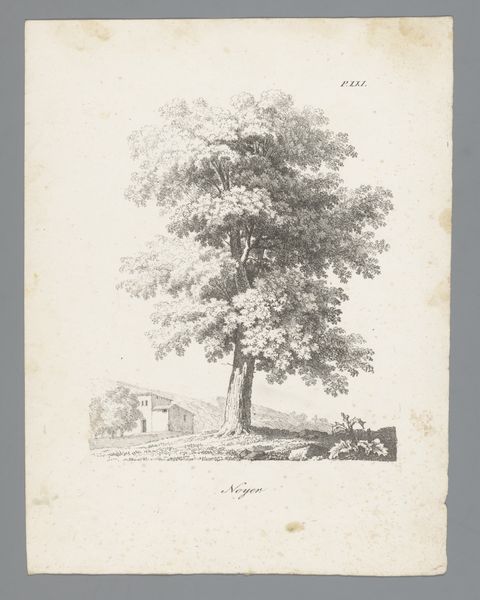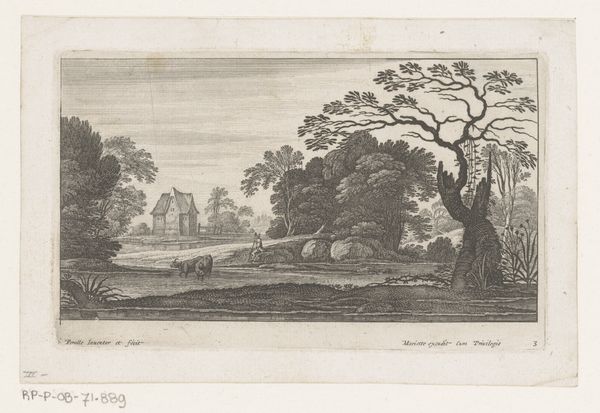
drawing, print, graphite
#
drawing
#
neoclacissism
# print
#
landscape
#
form
#
line
#
graphite
#
realism
Dimensions: height 438 mm, width 299 mm
Copyright: Rijks Museum: Open Domain
Constant Bourgeois made this print, "Parasolden," using etching, engraving, and stipple techniques. It depicts an Italian stone pine, also known as a parasol pine because of its distinctive umbrella-shaped canopy. Bourgeois’s image is a fine example of the picturesque aesthetic, a style widely adopted by European artists in the 18th and 19th centuries that emphasized the beauty of the natural world, especially when it included a certain level of wildness and disorder. Picturesque images often served as records, documenting notable natural and man-made sites, sometimes emphasizing the ways nature could reclaim cultural ones. This print emphasizes the height of the tree and the wildness of its shape, while the wall in the background appears to be crumbling away. To understand this artwork, we might consult period travel journals or botanical surveys. What did Italy and its landscape represent to people at the time? Such research can reveal the dialogue between art, society, and the institutions that shape our understanding of both.
Comments
No comments
Be the first to comment and join the conversation on the ultimate creative platform.
